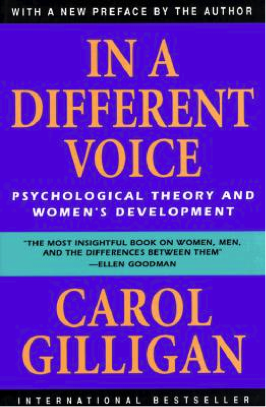"Out beyond ideas of right and wrong there is a field. I'll meet you there." -Rumi In the subcontinent, there is really only one religion that unites India, Pakistan and Bangladesh: cricket. With India’s...
KEEP READINGThe CPD Blog is intended to stimulate dialog among scholars and practitioners from around the world in the public diplomacy sphere. The opinions represented here are the authors' own and do not necessarily reflect CPD's views. For blogger guidelines, click here.
Culture Posts: Emergence of Relationalism
As part of the new year festivities, Culture Posts is focusing on the relatively new concept – relationalism – and its implications for public diplomacy. Relationalism is still so new it is not yet in the dictionary. It is only beginning to make its debut in academic journals.
What is perhaps most ironic about relationalism is that it appears to have been hiding in plain sight. All that was needed to see it was a different perspective or lens.
A 3rd Dimension
The previous Culture Post concentrated on the popular individualism and collectivism dimension. Individualism privileges the individual perspective, goals and actions. Collectivism emphasizes the perspective, goals and activities of the collective or larger group.
The dimension provides a powerful lens for viewing the wide diversity of behavior around the world. The problem is, however, scholars found many unexpected contradictions. Collectivism was particularly troublesome. Some scholars began to speculate that there were not two, but three dimensions.
Looking through the lens of individualism-collectivism suggests a binary view of relationships – no relations (individualism) or group relations (collectivism). The view is not only binary but also opposing: individualism versus collectivism.
Asian scholars were among the first to propose a third dimension. Their exploration provided a more nuanced view of relations not just with the collective, but within the collective.
Several scholars referred to the seminal work of social anthropologist Fei Xioatong, From the Soil, originally published in 1941. Fei contrasted the different relational patterns between Western and traditional Chinese societies.
For Western relations, he used the metaphor of individual rice stalks gathered into bundles: “The separate straws, the separate bundles, and finally the separate stakes all fit together to make up the whole haystack.” The bundles represented different social categories. He proposed the idea of “organizational mode of association” (tuanti geju). Fei acknowledge the limitations of the metaphor: people were not straw and could be in more than one bundle. The point he was making was the distinct boundaries between the categories and relationships based on social categories.
For traditional Chinese society, Fei proposed the idea of “differential mode of association” (chaxu geju, 差序格 局) to describe the concentric circles of interpersonal and social relationships that radiate out from each individual. He likened the concentric circles to the ripples cause by stone throw in lake. ..

Individuals are embedded in an ever-expanding circle of relationships that moves from close to more distant relations. Each individual weaves its own network of relationships. The distinction between distant and close relationships is one of the most basic assumptions underlying the Confucian of human nature. Each relation has its different roles and obligation.
Interestingly, while Fei used the metaphor to contrast Chinese with Western society, “circle of friends” is a well-known English expression.
The assumption of individuals as relational entities is found in the works of numerous Asian scholars. Hamaguchi suggested the Japanese concept of kanjin-shugi, which literally translates as “between-people-ism.” David Ho proposed the idea of “person-in-relationships” and “persons-in-relationships.”
It was not just Asian scholars who noted the primacy of relations. In the West, female scholars questioned the assumption of the autonomous individual that dominated the social sciences. Carol Gilligan of Harvard University characterized the “separate self” as a predominantly male perspective. She proposed “self-in-relationship” to describe “a view of self and other as interdependent and of relationships as networks created and sustained by attention and response.”

Out of this research on cultural and gender differences, in 1995 Yoshihisa Kashima and his colleagues proposed a third “relational” dimension which concerns the “relationship between the individual and other individuals.” [Kashima_et_al_1995.pdf]
The idea of being “in relations” (relationalism) instead of “in a group” (collectivism) helped crystalize some of the distinctions between the two dimensions. Whereas collectivism consists of depersonalized connections based on social categories, relationalism stressed ties to “specific others” or “significant others.”
Marilyn Brewer and Ya-Ru Chen in 2007 clarified the distinctions between the three dimensions. [Brewer_Chen_2007.pdf]
For campaign designers and message-savvy observers, one can see immediate implications in designing different public diplomacy initiatives.
Self-Presentation (how self is best represented)
Individual – a separate, unique individual
Relational – a node in a tightly connected network of interpersonal relationships
Collective – an interchangeable part of a larger social entityAgency beliefs (how things get done)
Individual – agency vested in autonomous individuals
Relational – agency vested in networks of reciprocal relationships
Collective – agency in groups as collective entitiesValues (what is important)
Individual – self-fulfillment
Relational – welfare of relationship partners
Collective – collective welfare of the group as a wholeSource: Brewer & Chen (2007)
Learning About → Leaning From
The emergence of relationalism provides an important 21st century lesson for public diplomacy and Western communication scholarship in general. It is not what is “out there;” it is the lens we are using to see that can limit our vision.
Relationalism, or emphasis on interpersonal relations, is not a new social phenomenon. One need look no further than one’s parents, siblings, or spouse.
Despite its pervasiveness as a social reality, relationalism is only recently emerging in the social science literature. In the prestigious Journal of Communication from 1951-2012 there is one article that mentions the “relationalism.” In the specialized journal on intercultural communication, International Journal of Intercultural Relations, there are two articles with references to “relationalism,” compared to 305 for “collectivism” and 388 for “individualism.”
Why relationalism may have been overlook is that scholars, both West and East, have been using cultural lenses such as individualism-collectivism to study other societies. To be effective in communicating on a global arena, intercultural communication scholar Yoshitaka Miike urges us to move from simply learning about cultures to learning from other cultures.
The emergence of relationalism is a lesson in learning from other cultural heritages. Through learning from other cultural heritages, we can develop new lenses. With new lenses, come new vision and insights.
The next Culture Post provides a preliminary look of public diplomacy through the lens of relationalism.
Visit CPD's Online Library
Explore CPD's vast online database featuring the latest books, articles, speeches and information on international organizations dedicated to public diplomacy.
POPULAR ARTICLES
-
March 22
-
April 11
-
April 1
-
March 4
-
March 19
Join the Conversation
Interested in contributing to the CPD Blog? We welcome your posts. Read our guidelines and find out how you can submit blogs and photo essays >.













